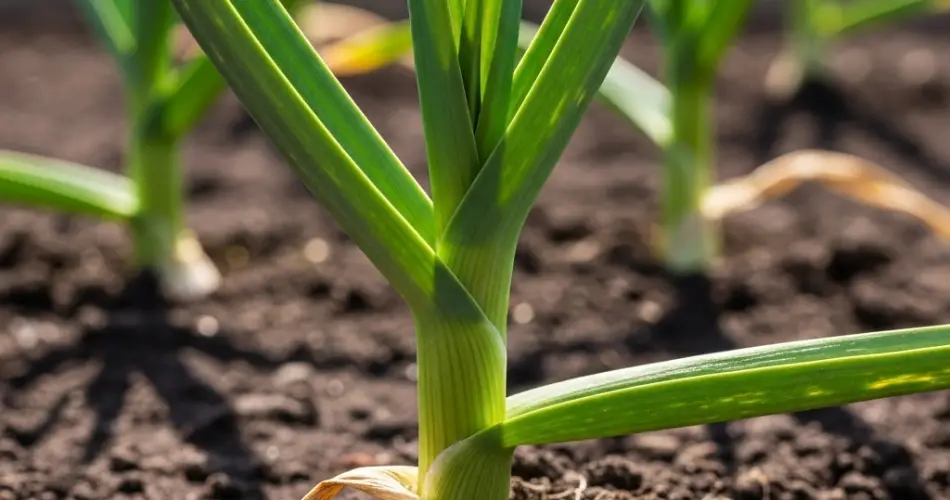October is a transition month in the garden. While many summer crops have come to an end, this cooler, more temperate season opens the door to a variety of new planting opportunities. Whether you’re starting seeds indoors, transplanting hardy vegetables, or refreshing flower beds with seasonal color, October is an excellent time to get your hands in the soil.
Knowing what to plant in October can help you make the most of the mild fall weather and even enjoy fresh harvests throughout the winter or early spring. The key is to choose crops that thrive in cool temperatures, tolerate shorter daylight hours, and mature quickly enough before hard frosts arrive.
Below is a comprehensive guide on what you can plant in October, depending on your region and garden type.
1. Leafy Greens
October is perfect for planting hardy leafy greens that not only tolerate cool weather but actually thrive in it. These plants grow quickly and can often be harvested throughout winter with proper protection.
-
Spinach – Cold-hardy and quick to sprout, spinach is ideal for fall planting. Sow directly in the ground or in containers.
-
Lettuce – Choose varieties like romaine, butterhead, or leaf lettuce. They do well in cooler temperatures and can be grown under row covers for extended harvests.
-
Kale – One of the toughest greens, kale often tastes sweeter after a light frost. Sow seeds or transplant seedlings in well-drained soil.
-
Arugula – A peppery green that matures fast—great for continuous sowing into late fall.
2. Root Vegetables
Root crops started in October can be harvested later in winter or early spring, depending on your climate. Cooler temperatures improve their sweetness and texture.
-
Radishes – Fast-maturing and frost-tolerant, radishes are ideal for fall gardens. Many varieties mature in just 25–30 days.
-
Turnips – These grow quickly and provide both edible roots and leafy greens. Choose smaller, fast-growing varieties for October planting.
-
Carrots – While they take a bit longer to mature, carrots sown now will be ready by early spring or can overwinter in mild climates.
-
Beets – Another dual-purpose crop, beets can be planted now and harvested for both greens and roots.
3. Alliums (Garlic and Onions)
If you’re planning ahead for a robust spring harvest, October is the perfect time to plant garlic and certain onion varieties.
-
Garlic – Plant individual cloves (pointed side up) about 2 inches deep and 6 inches apart. Garlic overwinters and is harvested the following summer.
-
Onion Sets – Choose overwintering varieties suited for your climate zone. Plant the sets now to establish roots before the ground freezes.
4. Cover Crops (Green Manures)
For gardeners looking to improve soil quality during the off-season, October is the best time to sow cover crops.
-
Clover
-
Winter Rye
-
Vetch
-
Field Peas
These crops suppress weeds, prevent erosion, and add nutrients back to the soil. In early spring, they can be cut back and turned into the soil as a green manure to enrich it for the next growing season.
5. Herbs for Indoors or Protected Areas
Some herbs won’t survive a hard frost outdoors, but October is a great time to start them indoors or in containers you can move.
-
Parsley – Hardy and productive, parsley can be grown inside near a sunny window.
-
Chives – Cold-hardy and perennial, chives are ideal for containers or garden beds.
-
Thyme and oregano – These woody herbs can be brought indoors or mulched heavily to survive mild winters.
6. Flowers and Ornamentals
Add fall color and plan ahead for spring by planting certain flowers now.
-
Pansies and Violas – These cool-season flowers can bloom through fall and even winter in mild climates.
-
Spring-flowering bulbs – October is the time to plant bulbs such as tulips, daffodils, crocuses, and hyacinths. They require a chilling period and will bloom beautifully in early spring.
-
Mums (Chrysanthemums) – If planted early in the month, mums can provide vibrant color through the fall.
Climate Considerations
What you plant in October depends heavily on your region:
-
Cold climates (zones 3–6): Focus on garlic, spring bulbs, and fast-maturing greens. Consider using cold frames or row covers.
-
Mild climates (zones 7–10): You have more flexibility—continue growing greens, root crops, and start winter vegetables.
-
Frost-free zones: October may still feel like summer. Take advantage of the cooler temperatures to start cool-season crops.
Final Tips for October Planting
-
Prepare your soil: Clear out summer plants and weeds, amend with compost, and loosen the soil to improve drainage and root penetration.
-
Mulch: Use straw, leaves, or wood chips to insulate roots and reduce temperature swings.
-
Protect tender crops: Use row covers, cloches, or cold frames to extend the growing season.
In Summary
October doesn’t mark the end of the gardening season—it’s the beginning of a new chapter. With the right plant choices and a bit of planning, you can enjoy fresh greens, root vegetables, and even beautiful blooms long after the summer sun has faded.
So grab your gloves, pick up a few seed packets or bulbs, and make the most of this cool, productive season in your garden!



